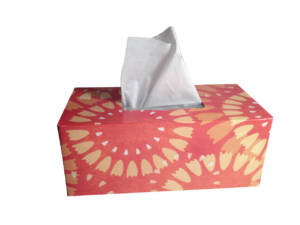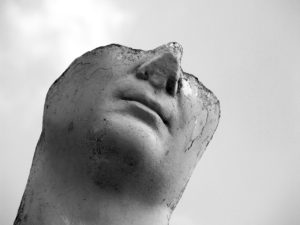
Sneezing is very forceful in your body.
Review
The inside of your nose is covered with mucous membranes, and that mucus traps up things so they don’t get into your lungs.
Some little particles float through the air and into your nose. They will land on those mucous membranes and irritate it. That irritation sends a signal to your sneeze center of your brainstem.
Callback
Brainstem
Sneezing Details
The sneeze center sends out several signals. One goes to your diaphragm to tell it to compress the lungs to force the air out. Another signal goes to your tongue to have it direct the air through your nose. The last signal goes to your eyes – it is really true, you can’t sneeze with your eyes open.
So your abs contract and your diaphragm forces your lungs to exhale, your tongue directs the air to go out your nose, so the mucus plus the things that irritated your nose flies out of your face.
*Mythbusters sneeze experiment*
The proven statistics on sneezes is that they travel about 40 mph but only go about 20 feet.
Holding in a sneeze can be painful and damaging. By holding in all that air, you can rupture your eardrums, damage your tear ducts in your eyes, fracture your nasal cartilage or bones, or cause nose bleeds because of the blast against your sinus passages.
Sneezing Advice
There’s so many tricks about trying to stop a sneeze – most of them involve counter-pressure on other spots on your face or body.
The best advice for stopping a sneeze is to blow your nose to get out the irritants before the body blasts it out with a sneeze.
You will never ever sneeze when you’re sleeping. So morning sneezing fits are normal for a lot of people. This is because all the dust and stuff you breathe in while you’re sleeping finally irritates your body. So morning congestion and sneezing is normal to help clear all of that out.
We’re unsure why people will sneeze in other situations like sudden exposure to bright light or changes in air pressure or temperature. Another unsual trigger is an over-full stomach. Multiple people have reported they feel nauseous and once they sneeze, the sick feeling goes away. I dunno….
If you do have to sneeze, make sure you cover your face. Use the elbow technique!
*Mythbusters hanky*
Connect with me
Support us on Patreon
*NEW* Join the Pharmacist Answers Podcast Community on Facebook
Subscribe: iTunes, Stitcher, GooglePlay, TuneIn Radio
Like the Facebook page
Music Credits: “Radio Martini” Kevin MacLeod (incompetech.com) Licensed under Creative Commons: By Attribution 3.0 http://creativecommons.org/licenses/by/3.0/




